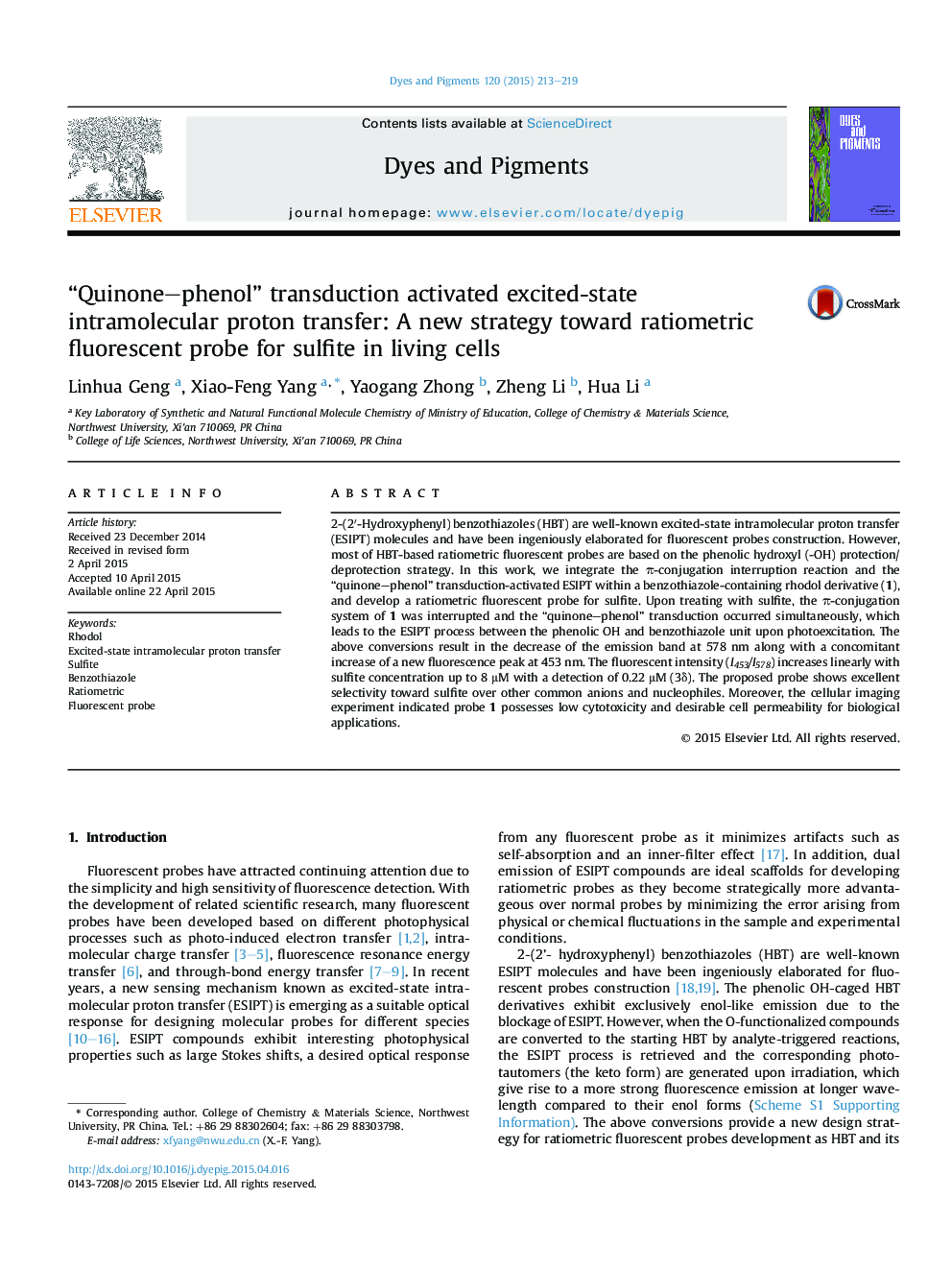| کد مقاله | کد نشریه | سال انتشار | مقاله انگلیسی | نسخه تمام متن |
|---|---|---|---|---|
| 175765 | 458920 | 2015 | 7 صفحه PDF | دانلود رایگان |
• A benzothiazole-containing rhodol derivative (1) has been constructed as a ratiometric fluorescent probe for sulfite.
• The sensing is realized by combining the π-conjugation interruption and “quinone–phenol” transduction-activated ESIPT.
• The probe displays excellent selectivity toward sulfite over other analytes.
• Preliminary experiments show that probe 1 has potential to track sulfite in living cell.
2-(2′-Hydroxyphenyl) benzothiazoles (HBT) are well-known excited-state intramolecular proton transfer (ESIPT) molecules and have been ingeniously elaborated for fluorescent probes construction. However, most of HBT-based ratiometric fluorescent probes are based on the phenolic hydroxyl (-OH) protection/deprotection strategy. In this work, we integrate the π-conjugation interruption reaction and the “quinone–phenol” transduction-activated ESIPT within a benzothiazole-containing rhodol derivative (1), and develop a ratiometric fluorescent probe for sulfite. Upon treating with sulfite, the π-conjugation system of 1 was interrupted and the “quinone–phenol” transduction occurred simultaneously, which leads to the ESIPT process between the phenolic OH and benzothiazole unit upon photoexcitation. The above conversions result in the decrease of the emission band at 578 nm along with a concomitant increase of a new fluorescence peak at 453 nm. The fluorescent intensity (I453/I578) increases linearly with sulfite concentration up to 8 μM with a detection of 0.22 μM (3δ). The proposed probe shows excellent selectivity toward sulfite over other common anions and nucleophiles. Moreover, the cellular imaging experiment indicated probe 1 possesses low cytotoxicity and desirable cell permeability for biological applications.
Figure optionsDownload as PowerPoint slide
Journal: Dyes and Pigments - Volume 120, September 2015, Pages 213–219
